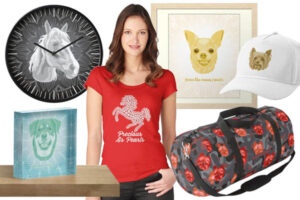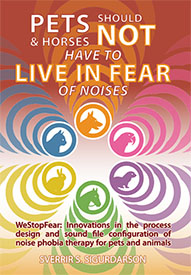 The text on this page is from the book "Pets and Horses Should Not Have To Live In Fear Of Noises" The book is available on Amazon.com as Print version or Kindle version.
The text on this page is from the book "Pets and Horses Should Not Have To Live In Fear Of Noises" The book is available on Amazon.com as Print version or Kindle version. Sections on this page:
The story behind the innovations: A long journey
The CD disc and member's instructions website Sound Phobia Free
Looking at things as an outsider: The four innovations born
The website Flugeldahljod.com or “fireworks sounds”
A designer brand to support WeStopFear
Today: WeStopFear ready to accept users
About the author, developer of the solution, and founder of WeStopFear.com
(From page 155 of the book)
Someone may be curious about how the WeStopFear project, and the innovations introduced through the project came to be. How and why were they developed? And what might the future hold?
Here comes an overview of this journey from its very first and imperfect beginnings, and up until where the project stands at the time of the writing of this book. The text is written from the point of view of the author, who is also the inventor of the Simple Secure Steps method.
The story behind the innovations: A long journey
As the reader may realize already, I, the author, have spent some considerable time thinking about this issue. I believe this issue is perhaps one of the largest, unresolved problems that pets may face, but have not gotten the general attention it should. The problem is widespread and common, and the consequences can be very serious, even to the point of devastation for the animal, or even untimely death.
Can this be the next big step that dog owners and pet owners can take, to fix or keep at bay a serious and even fatal problem, which pets of all kinds may face?
These innovations came gradually and took a few years to take shape.
Dogs and horses in trouble during new year’s
It started simply enough. I was driving through my hometown, Reykjavik, Iceland, in the month of December of 2008. It was a very strange time in the nation’s history, as just three months earlier the entire banking system of Iceland had collapsed. The future was unclear. Maybe that was part of the reason that when I heard a news story on the radio that, instead of just brushing it off, I felt an urge that it would be very necessary to do something about what was discussed in the news.
The evening news on the radio came with a story about how frightened horses and dogs would become, during the New Year’s Eve.
Icelanders have the custom of lighting a huge number of fireworks. This of course is done both for fun, and to support the search and rescue teams of the country who earn money selling fireworks. As a result, fireworks are generally very expensive, since buying them is the primary way of raising money for the rescue teams.
But this isn’t just fun.
This was and is a real problem for the animals, who become very frightened because of the flashing lights in the sky, and loud sounds from exploding fireworks, and can harm themselves or run into the night and get lost during the fanfare. I was sorry and shocked to hear this.
“Wait a minute. Shooting up fireworks is something you do to have fun, right? But the animals are mad with fear?” They don’t know what is going on, and apparently, they take this as potential threat.
So Icelanders LOVE their fireworks in the new year, but often the animals don’t.
3 billion dollars’ worth of fireworks in 30 minutes?
As I have a business degree, I had fun comparing the amount Icelanders spend on fireworks. They spend around US$ 3 million on these and burn most of it over the course of half an hour, from 11:40 of December 31st, to 00:10 of January 1st. The population of Iceland is 1/1000 of the population of the United States, so according to that, if Americans were as crazy about fireworks, they would light up a US$ 3 Billion worth of fireworks in just 30 minutes. That’s quite something. If a single company was selling these fireworks, it would sit securely on the Fortune 500 list of the largest corporations in the United States. A Fortune 500 corporation, selling things that are burned up in just 30 minutes per year. Pretty crazy, huh?
What about police dogs and police horses?
I didn’t think much about this more, until a few weeks later when this was brought to my mind again. Again, in the news was some story about an upheaval in some foreign country, and there were policemen on horses.
Police dogs and police horses? In the middle of this? If it was possible to train them to tolerate riots, with shouting, firecrackers exploding, fires being lit, stones thrown, and who knows what, then surely it would be possible to train ordinary dogs, horses, and other types of pets to know and tolerate fireworks?
Couldn’t you simply play these sounds, and even try to show the visual side to them as well, the fireworks, on a TV screen or using a screen projector? To get them used to these stimuli.
Fantastic! A solution existed!
By searching for a few keywords on the Internet, I found out that a solution already existed, at least for the sounds. It was possible to buy simple audio CD discs or collections of MP3 sounds, and play these sounds for the animals according to a system. These therapy methods were called desensitization or habituation by professionals. It seemed a relatively simple process.
My interest was awakened. I started looking around, to see which products were available. It was clear that these products that were available, for implementing these methods, were mostly not very sophisticated. They consisted of audio CD discs, perhaps with some simple instructions printed on a small leaflet in the CD box. The companies offering these were not large, and for the most part did not utilize sophisticated marketing methods to promote and sell their products. I, having a business degree with emphasis on marketing, could see that clearly.
Why isnt’ it widespread?
At another, later date, I started thinking what the reason could be, that the use of these methods wasn’t more widespread? Problems stemming from sounds that animals don’t recognize can be very serious. Noise phobia can rob a dog or a cat, or perhaps other types of animals too, off their quality of living. Instead of living their relatively care-free life, then their emotions and thoughts are taken over by an utterly irrational and unnecessary fear. Or even a nasty, multi-faceted long-term phobia.
This could lead to a chain of events that resulted in damage, injury, pets getting lost and even pets getting killed. Pets were known to be mad from fear, trying to escape what they thought was a clear and imminent danger, but was sounds from some rather harmless sound source. It is also known that pets have become so badly affected by this fear, that the owners have had them euthanized.
This was and is actually a serious issue. The harm done can be considerable. Every year, pets live in agony, the situation causes unhappiness in the homes and a lower quality of the relationship between the pets and their owners. And every year pets get lost or killed. All of this is extremely sad, utterly unnecessary and irrational.
A process too demanding on the ordinary dog owner?
At one moment, I started really asking myself this question: Why isn’t it more common to do this kind of therapy, since the problem can be so serious?
I was thinking... thinking... thinking. Really concentrating on this pressing question.
Why aren’t dog owners commonly doing this, for instance to get their dogs used to these sounds beforehand, to prevent these problems from arising in the first place?
In a moment of epiphany, I realized that while the method of desensitization and habituation are basically very simple, then the methods available, meaning the steps of the process that the dog or pet owner must implement, simply were too cumbersome to work with. They called for some very long-term dedication, where uttermost precision must be maintained at all times.
There is a small number of people willing and able to do this. But the masses - the normal dog and cat owners - are simply preoccupied with all sorts of things on a daily basis. They have jobs to go to or school to attend. Then they need to do some shopping, fix breakfast and dinners, they want to watch some TV or read a book, do physical exercise, meet with friends, or have quality time with the human members of the family. Every day, there is more to do than can be fitted into their schedule. Every day they would like to spend more time on various things.
On top of this, they also happen to own a dog or a pet. That calls for some dedication daily as well. If you own a dog, you often need to walk the dog every day. This takes a certain amount of time. So there maybe isn’t too much time available in addition, to go through a process of playing sounds every day, for instance to prevent possible problems with fear of sounds, at some time in the future. Or perhaps, to treat a fear of sounds that is there already.
Seemingly small things can be a threshold
The small details that these conventional methods required may not seem like much. The need to set the volume exactly every time you play these sounds, perhaps on various audio devices, some of which don’t have any markings or scale by the volume button. The need to almost be on a stopwatch to stop the playing at exactly the right moment when you are using the music mix method. Or to listen attentively so that you will hear when the soundtrack is finished, to hit the stop button.
These requirements may seem small and simple. But in a world where people’s lives are already cluttered and filled with all sorts of tasks, some of which are postponed week after week since they don’t have time to do all they would like to do. These small drawbacks would raise a threshold, and this threshold, I knew from my little knowledge of psychology, and some more knowledge of marketing, would simply mean that a large portion of people simply wouldn’t do this.
The fact is, that these problems with unknown sounds are not always apparent. They may or may not arise at some unknown future date for your dog. If they arise, will it be in this year or next year? And will it be serious? Will it lead to frantic fear, and even my dog getting lost and getting killed?
Nobody thinks that is going to happen to their sweet, well-behaved dog.
All this means that in the moment of the day, this problem often wasn’t pressing in that very day. So, people postponed, or never really considered doing this. Perhaps partly because as the available methods weren’t good enough, and no better methods were known, and thus being discussed. This problem and the methods to deal with them simply were not considered seriously.
Lower quality of life is the result
So the simple fact is, that while this may be a serious issue that isn’t addressed properly, then the technical solutions available to do this are simply too tedious for the general masses of pet owners, ordinary people living ordinary, hectic lives, to do this as a general standard.
These problems are not prevented well enough.
Quality of life is lower. Pets with these problems are “away“ from their owners, in their own little personal battles with a fear that is totally irrational and unnecessary. Pets develop anxiety problems.
They become more difficult to manage.
Pets get lost.
Pets get killed.
Sorrow is in many homes.
I realized that this was an issue where improvements could be made. What about these technological solutions that are available to implement these methods? Would it be possible to find a way to improve upon these?
A slightly better solution
One thing I saw quickly was that you could do a much better job of giving the instructions to the users who would conduct the therapy, by offering the instructions on a large members’ website, rather than just a small, printed leaflet in a CD box. There, you could use text, pictures, audio and video to enhance the experience, and hopefully increase the likelihood of a successful completion of the therapy.
So, I concluded that this could be a field that I could go into, and offer new products to dog owners and later on, even owners of other types of pets. I coined the slogan None Left Behind, meaning that I might focus on all types of species from Fauna, the animal kingdom as it is called, that humans have taken into their home, and can at times experience fear problems related to sounds.
The CD disc and member's instructions website Sound Phobia Free
So… to introduce to the market a therapy CD with much more comprehensive instructions ? That’s a good idea. But to create such a disc, I needed sounds of the type that dogs could become frightened of. I had found out that it wasn’t just fireworks. It could be many other types of sounds.
I discovered that there are websites that offer free sound clips, sound recordings made by amateurs. These sounds are in the public domain, or with a Creative Commons 0 (zero) license, and can be freely used by anyone, for any purpose. I am very thankful to the contributors of these websites for the sounds I could download and use. Apart from this, I also recorded myself a good number of sounds, to use on the CD.
The CD Sound Phobia Free was released on Amazon.com in 2014. It contained 30 therapy sounds and had a small brochure in the CD box. The most interesting novelty was a dedicated website with a member’s area, with much more comprehensive instructions than had ever been seen in this field, to my knowing.
I offered the CD but did not do any marketing. I wanted to see what would happen. Nothing happened at first, but then sales started coming in. The CD was rising steadily in sales. It reached sales rank of #919 in the category Exercise music, which I think is not bad.
I didn’t release solutions for other types of pets even if I had planned for that. Soon this product was getting obsolete from my point of view, since I had started to think systematically about the solution and the process steps that are needed to implement this for a pet. A basis for some innovations were starting to pop up in my mind. So in the end, I discontinued the product Sound Phobia Free and put the focus on product innovation.
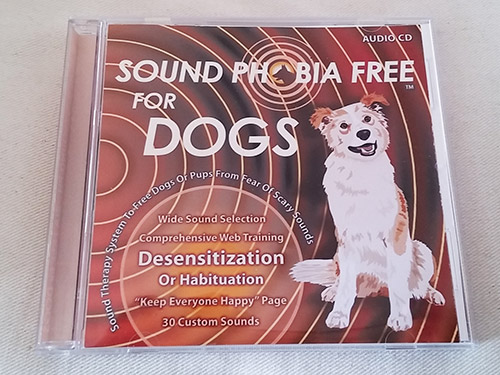
The front of the dics box produced by and sold on Amazon.com.
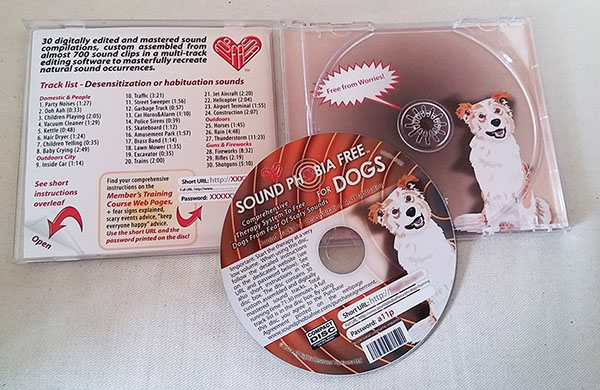
Inside the disc box, with the disc and list of sounds.
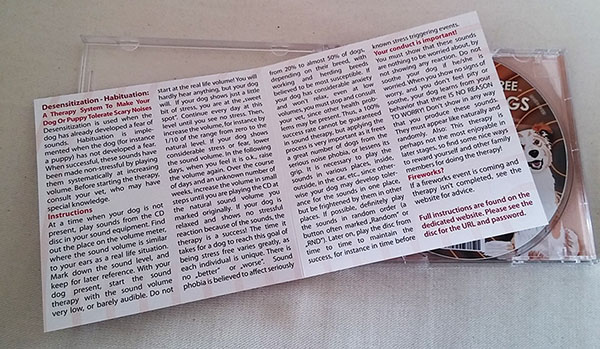
Insice the folded cover, with instructions for use. The main instructions were also on a dedicated website that was locked by a password, and the password was printed on the disc.
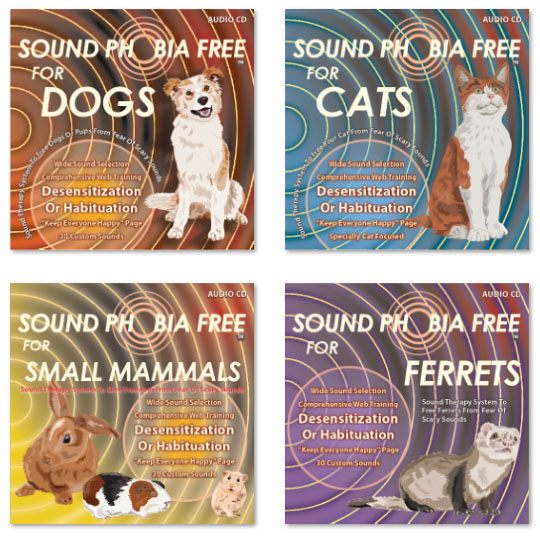
Cover art for the Dogs solution,and for solutions customized for other types of pets: Cats, small mammals and ferrets. Only the dogs solution managed to be offered on Amazon.com.
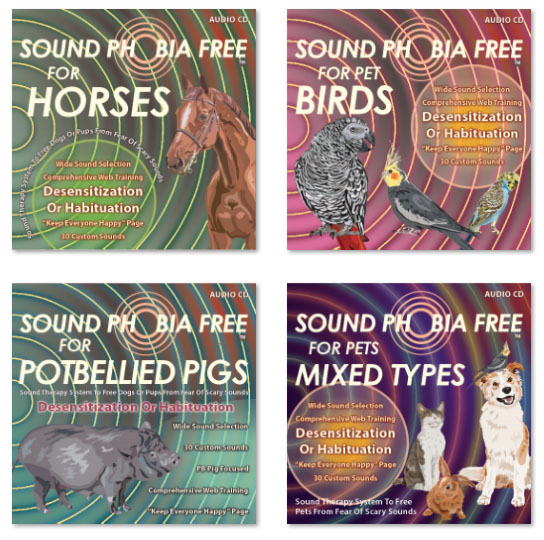
More cover art for solutions customized for other types of pets: Horses, pet birds, Vietnamese potbellied pig, and a solutions for households with several types.
Looking at things as an outsider: The four innovations born
It can be an advantage in situations like these to look at things as an outsider. When you are an ordinary dog or cat owner, you simply do things like they have always been done. That is how things work from day to day. My approach, however, came from the education I have in business administration.
That doesn’t sound like it has anything to do with this sort of situation, but one of the things I studied was the management of processes, for instance in manufacturing industries and services. After all, doing this type of noise therapy is a process that you need to implement and manage. Clearly, there was a process here that wasn’t working well enough for pets and pet owners. When looking more closely into processes, you can go through what is called process analysis. You make a process flow chart, and then you can go into analyzing each step of the process, what implementing it calls for, and whether it is possible to cut out steps, shorten routes, changing how things are done, and so on and so forth, this is re-engineering the process, and to go into process re-design.
And this is what I did, partly consciously, and partly in the sub-conscious.
Then one day there was an epiphany. One realization, one idea on top of another, and the ideas for the Simple Secure Steps, the Volume Anchor, the Timed Access, and the Natural Intervals came into the light.
I became convinced that these innovations would have the potential of changing this game, and started developing the solutions, along with a website to offer the service on. This was a large undertaking, and the development work progressed slowly, but surely.
The CD was dying, and the future was digital files
At the time, technological changes were taking place in the audio field. The audio CD disc was slowly becoming replaced with digital download of audio files. I realized that the future would be setting up a member’s website with streaming audio and instructions and training material on the web. The main product would not be a CD disc. This meant I needed to develop this solution, and of course, I was doing this alone without support, to a great extent in my spare time, so the work didn’t commence in full force.
I wanted to test the new method of Simple Secure Steps, and for that purpose, I decided to set up an entirely new website for pet owners in my home country of Iceland. Use of the website was offered for free. It had six sections, for dogs, cats, birds, small mammals, horses, as well as a special section for households with several types of pets in one home.
The website Flugeldahljod.com or “fireworks sounds”
As has been mentioned before, Icelanders are pretty crazy about fireworks, and the problem that is best known among Icelandic pet owners when it comes to noise phobia are problems with fireworks during the new year’s. So, I decided to let the website focus on these types of sounds. The website is named “Flugeldahljod gerd orugg,” or “firework sounds made safe” in English. The URL is www.flugeldahljod.com, and the website is still open and active.
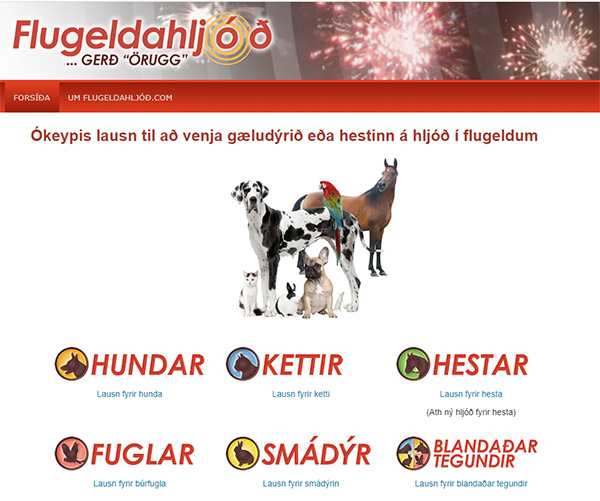
The graphics on the front page of flugeldahljod.com.
It should be noted that the website is very comprehensive, with videos and instructions, but I put very little emphasis on branding and the design and styling of the website. The sounds were uploaded to Soundcloud and were served from there.
This also meant that the website focused on an event around December 31st, instead of focusing on all the different types of sounds that pets and animals can become frightened of. Nevertheless, I was able to sign up a good number of users, and I did get some user responses about the new Simple Secure Steps method.
I did manage to sign up almost 700 users, which is nearly one in every 200 homes in Iceland. The reaction was quite positive, and people were thankful for this free service.
To compare, 700 users would be like 700,000 users in the United States, proportionally.
The website was divided into six sections: For dogs, cats, birds, small mammals, horses, and for homes with a variety of pet types in the same household.
The users of Flugeldahljod.com were offered two options: To conduct the noise phobia therapy using the old, “classical” method of just one set of sound files, and then to use the new, Simple Secure Steps method. Several users used the new method, and I did receive positive comments. There were users who reported having been successful in this, and they were happy about the new method and how it was organized. These responses were important, and reassuring.
However, since the website focused on an event around the new year, instead focusing on all the different noises that can make animals frightened throughout the year, then that meant that to become successful at this, dog owners would have to start the therapy process in October preferably. If the focus was on all risky sounds in general, the dog or pet owner could start the process at any time during the year.
But for the process offered on the website, since the dog or pet had to be ready to experience these sounds on December 31, that meant that the therapy process had to start preferably in October. In reality, very few people did that. Most dog and pet owners started to think about this problem after Christmas, or on December 27 and the days remaining of that year.
This was of course far from being enough. So, for that reason, the website Flugeldahljod.com never was fully successful, although it could have been quite successful if the dog and pet owners had started using the service in time, or in October-November, rather than December 27.
This is not a problem for the main service that is now opening to the public. The actual, main noise phobia solution focuses on all sounds, and is not stuck on an event taking place only once a year.
For that matter, in the large picture, this is not something to worry about.
Media attention
Understandably, having set up an entire website I became seen as someone with knowledge about this subject, and was interviewed in a national newspaper, DV, on December 8, 2015, with the news feature shown on the front page. I was also interviewed in the evening news of Stod 2, or channel two, a national TV station, on December 26 of 2016, and the Channel 1 national radio news program, on December 20 of 2016.
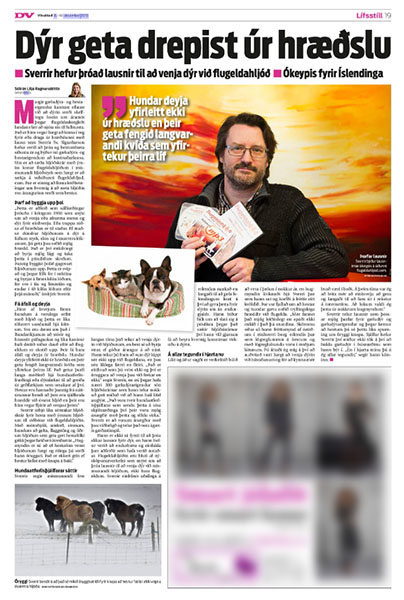
The full-page interview in the DV newspaper, December 8, 2015.
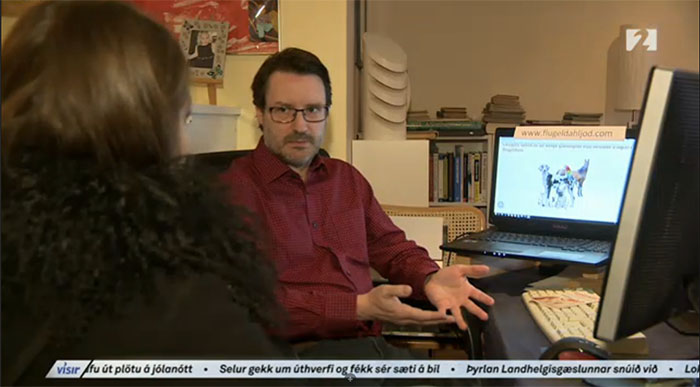
Screenshot of the Stod 2 TV interview, December 20, 2016.
Educational videos
I created several videos for the Flugeldahljod.com website. There were two types, one focusing on explaining the problem, and the other explaining the methods used to deal with the problem.
Each type was made in versions for dogs, cats, birds, small mammals, horses, and various types of pets.
Below you can see two videos about the problem, for cats and various types of pets. Then there are two videos about the solutions, for dogs and horses. The videos are in Icelandic, like the audience was.
Prevent Fear
In 2015, I also worked on developing a product with the new Simple Secure Steps therapy process design. The product was supposed to be available on audio CDs, as well as downloadable MP3 files.
Originally, the plan was for the brand name Noise All Right, but later I changed it to Prevent Fear. At first the plan was to offer a product for dogs, but later I determined to expand this to all types of pets and horses, instead of focusing only on one type.
The question was how to bring this to the market. Crowdfunding websites had gained popularity at the time, and I considered using them. Kickstarter was not open to Icelanders, but Indiegogo was. I worked on developing a campaign to introduce the Prevent Fear line of noise phobia therapy products. I designed CDs and CD boxes, and created some informational videos, hiring voice over talent for the English text.
In order to learn how to do this, I bought the services of some consultants on Fiverr. An advice was that the first 48 hours for a new campaign are crucial. During that time, you would need to get a lot of supporters, drawing on your pool of followers. If that was successful, then the campaign would appear on a page with recommended and trending campaigns. If you could not get traction in this short period, the initiative was most probably a failure. I didn't have any followers, as I hadn't introduced the project anywhere while I was developing it, since I didn't know when it would be ready for launch. I did a few things to try to gain traction, but it didn't work out well.
Actually, a noise phobia therapy product should be an evergreen product, since every year millions of pets and horses are born, and they all need this type of therapy. The success of this type of product should not be based on some 48 hours of hype.
Also, with solutions for all types of pets and horses, the overall line of products was quite complicated. The logic is of course that people own many types of animals, and it is a no brainer to offer solutions for all of them. But the complexity of the wide range, and thus dispersed focus, did not fit well with this 48 hour hype window.
So Prevent Fear didn't get off the ground. Also, the age of the CD was coming to an end, as MP3 players and audio streamed over the Internet in real time was becoming the norm. And I continued speculating about the best brand name.
CD boxes and MP3 file thumbnails
The images below show mockups of CD discs and CD boxes. Those were never sold in the market.


Thumbnails for downloadable MP3 files.
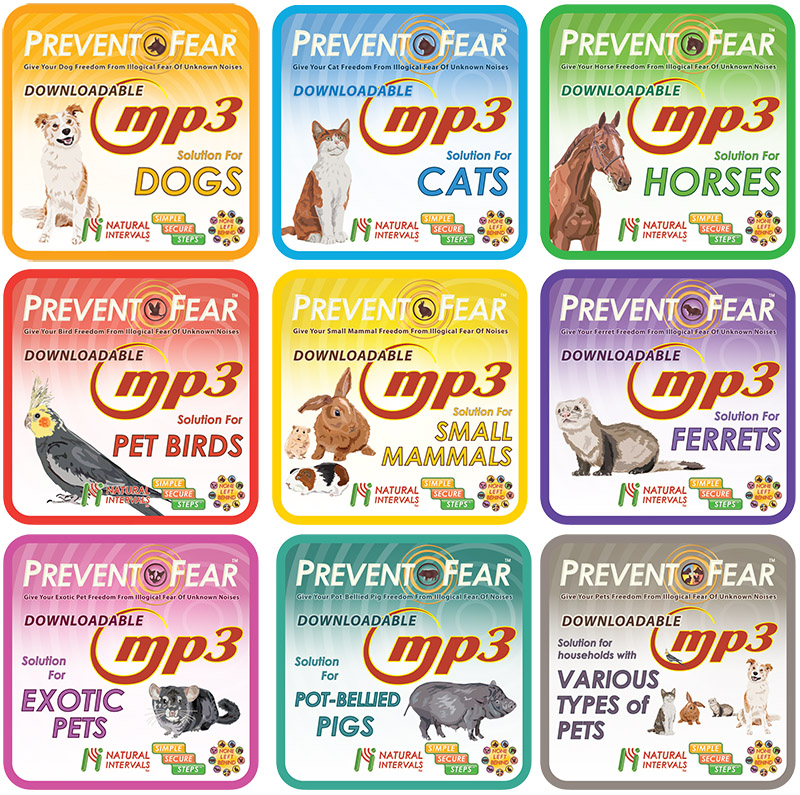
Promotional videos
Below you can see some of the videos created to promote Prevent Fear.
WeStopFear developed
At the same time when Flugeldahljod.com was available for Icelandic pet owners, I continued speculating in the brand name. I concluded that the name We Stop Fear could be better.
The brand name "we stop fear" came up in brainstorming sessions. The idea behind it is that we (pet and horse owners) come together to stop this problem of unnecessary fear in pets and horses. So it is a community focus.
The domain name westopfear.com was registered in 2016. I don't think I had heard of another company whose name also starts with "we" at the time.

I developed the website of WeStopFear, with all that would be necessary to do this. This included five sets of audio files and online audio players to play the sounds, comprehensive instructions on many pages, and blog posts with entertaining content. This would be on a member’s website where users would sign up and log in to implement the therapy. I also developed a five-disc CD set, to offer along with the website.
Developing this service and figuring out how to generate revenue to support it was partly challenging because I live in Iceland, and several things that are offered on the Internet, for example payment provider services, are not available in Iceland. This did raise some obstacles that could be tricky to find a solution for.
CD disc designs
In the beginning, the idea was to create and sell audio CD disc sets. For that these mockup designs were created.
The box and disc designs below are mockups. They were never for sale.


Turning to streaming audio players
Later it was decided to focus of audio players on a membership website, that stream in real time over the Internet. Members there will be able to purchase the download of MP3 files, and they can use these files to burn their own discs. (They will need to burn quite a number of discs).
Whether WeStopFear will offer ready audio CDs in boxes remains to be seen. That will be based on the market demand, which I don't predict will be there sufficiently for that to make sense.
Several brand names
The main service was to be offered on a member’s website, where pet and animal owners could implement the noise phobia therapy, using the new Simple Secure Steps method.
The development of this service, and the member’s website, and all the design work, copywriting and mixing of the therapy sounds, required a lot of work. This was done in my spare time, with no financing or grants received. I would have preferred that this work would have progressed faster, but things are as they are, and not much to say about that.
I was occupied with other projects as well and had to make a living. The solution was built step by step, and none of the work has been lost.
What would the service be called? During these years, ideas for several brand names were developed, and logos and everything designed for them. Here is an overview of those:
Sound Phobia Free
Noise All Right
Noise Phobia Free
U Block Fear (you block fear)
U Stop Fear (you stop fear)
Prevent Fear
WeStopFear
PhobiaNo
The second to last brand name, which I was planning to use for the longest, was We Stop Fear. And in the end, that is what was decided.
This name is very direct and, in a way, slightly shocking. It addresses directly what the basic goal is about. To reduce the problem of pets and animals being burdened by fear, and even suffer serious consequences, where the fear is entirely unnecessary.
Several brand logo designs
One of the hats that I wear is the hat of a designer, although I am not professionally trained as a graphics designer. Designing the brand logos and graphics would be in important part of presenting the whole solution, and for the names mentioned above, I played with the look of the logos.
Here are several studies for those.
The Sound Phobia Free logo was actually used on a product in the market, that was the therapy disc offered on Amazon.com in 2014, that is seen above.




UBlockFear and UStopFear logo studies:

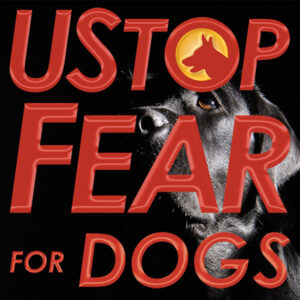
Prevent Fear logo studies:


An early logo for Volume Anchor:
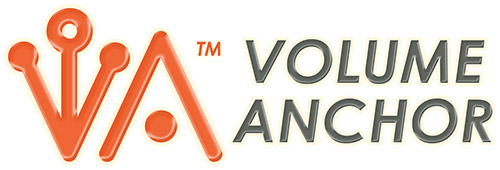
An early logo for Natural Intervals:
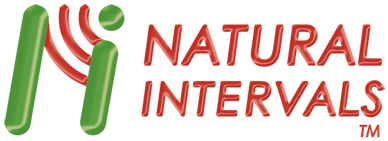
An early logo for WeStopFear - Solution for Dogs, and welcoming message:

The current logos
The current logo for WeStopFear, the logo for Solution for Dogs, and the logos for the Simple Secure Steps and four innovations:


The logos, like the ones above, are designed and © copyright 2023 by Sverrir Sigurdarson, the developer of WeStopFear, the Simple Secure Steps therapy process and the innovations, and the author of the book.
An LLC company: TopFauna
I also decided to form a company around this to separate the operational risk from my personal estate and gave it the name TopFauna. That name is then reflected in the next part that was developed.
Here is the logo for TopFauna, designed by the founder and author. The heart has the letters TopFauna inside, and could be said to be in an Art Deco style?
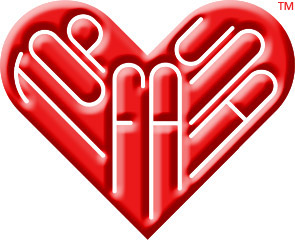
Here is the logo with the name logo.

A designer brand to support WeStopFear
Doing this without any financing or grants wasn’t easy. There was the question of how to monetize the service, as putting up this and operating it would never be free. Getting people to sign up and pay for the opportunity to play sets of some not-very-enjoyable sounds for their pets could be difficult.
How could I generate revenue in a positive way?
Then one day it occurred to me how this could be solved.
Analyzing operational processes and developing new ways of implementing things, in the way that resulted in the creation of the Simple Secure Steps, Volume Anchor and Natural Intervals innovations, isn’t the only type of creative thinking that I have been occupying myself with through the years.
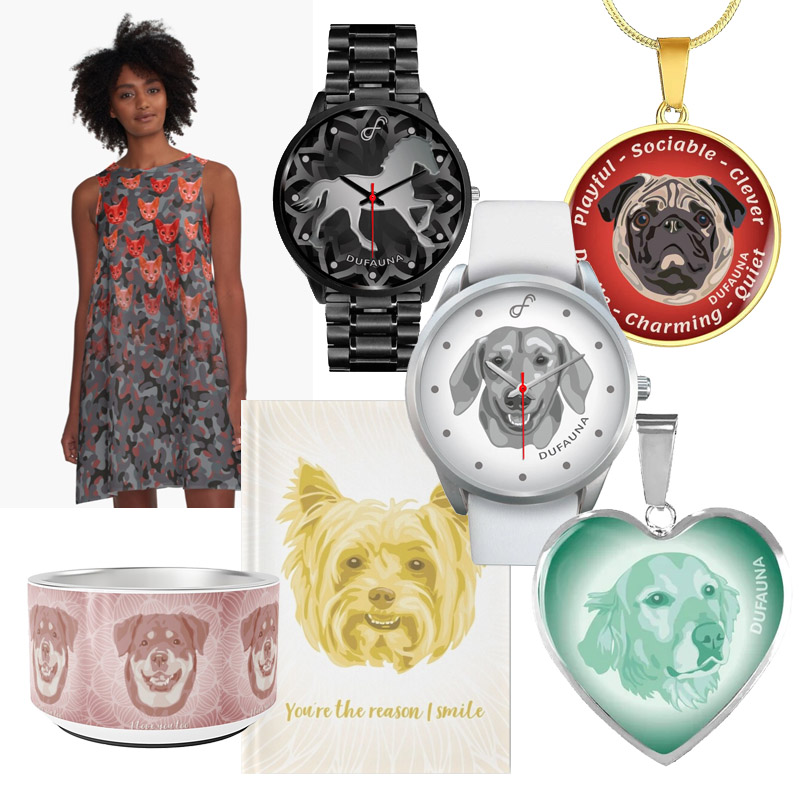
A few DuFauna desings by the author.
I actually see myself primarily as a designer. One day, I discovered a development in design and production that is called print-on-demand. This is a business model where designers create digital images of their designs, upload these to websites of services that offer the production of products with those designs. Then, if the design is sold in one copy, the design is produced in one copy and shipped to the customer.
When print-on-demand was in its infancy, the types of products that could be offered using this technology were rather limited. It was t-shirts, hoodies, hats, mugs and so on. But this field has gotten a lot of interest and attention, and with it, production companies have been expanding their product type offerings. Today, there is a very large selectin of different products that can be offered and produced in this manner, and it is expanding every day.
The basic design idea I came up with was to create vector drawings of pet and animal faces, based on images from the public domain. These would be vector forms in several layers, where the layers in one form could easily be colored in any color. With this approach, it would be easy to create a myriad of different color sets of the same face. The image could then be used in designs in many different ways. I envisioned for instance patterns similar to flower patterns, where faces in different color combinations would replace the flowers in patterns. This was a kind of idea I haven’t seen often.
A name had to be created for this new brand. I figured out using the word Fauna, which is Latin and means the Animal kingdom. “Du” is a French word, meaning “of” or “from” or “deriving from”, and as said before Fauna stands for the Animal kingdom. So, the name reflects the main artistic inspiration, and means “from the Animal kingdom.” The brand name DuFauna was born.
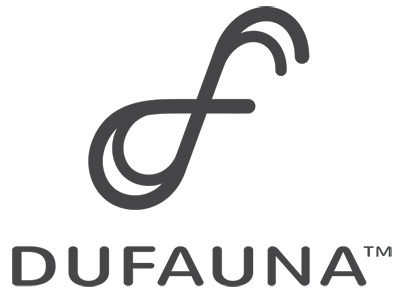
I have put a considerable amount of work into creating designs. I created an online shop using the solution from Shopify. On www.dufauna.com you can currently see jewelry and watches, as well as a few other types of products. I have also uploaded designs to a print-on-demand website named Redbubble. The good thing about is that it has a very wide selection of products, although many interesting products are not available there. Redbubble handles the production and the customer service, as well as collecting and remitting VAT (value added tax) and sales tax according to the location of the buyer. This suits me well as handling these matters is somewhat cumbersome.
These products are not just the perhaps slightly bland standard merch products that are sold for financial support of projects like this. DuFauna is supposed to be a proper designer brand, that offers desirable, beautiful, and cool designs and products.
I hope that users of WeStopFear, and others as well, will be interested in DuFauna designs, and thereby supporting WeStopFear as well.
Today: WeStopFear ready to accept users
After having nearly fully developed the technical solution in the member’s area of WeStopFear, and after having developed the first basic designs for 15 dog breeds, mixed breed dogs, 4 cat breeds and horses, the project was set on wait while I was working on other things. That wait prolonged for a couple of years.
Then I decided that this had waited, nearly ready to accept users, for too long, and decided to “put the petal in the metal” in the fall of 2022, and did what needed to be done to open this. This was finished in early 2024.
This is really the third attempt at offering noise phobia therapy solutions to the public: The two first were Sound Phobia Free, the CD disc and the password protected member’s instructions website that came with it, and the Icelandic website Flugeldahljod.com which was set up to help pet owner with fear of fireworks, and also to test drive the new Simple Secure Steps method. These two first attempts were successful as such, although this third version, WeStopFear, is supposed to be vastly more sophisticated than the two first.
WeStopFear is now open and offers pet owners to implement the WeStopFear Simple Secure Steps noise phobia method. At the time of writing this book, there are four programs ready: Basic program, More program, Advanced program, and the Full Care program.
Users will be offered to tell their pet-owning friends and family about WeStopFear and receive certain extra benefits as a thank-you in return. With those additional features, the user of the WeStopFear solution is well positioned to increase the likelihood of a life of feeling safe for the pet and decrease the likelihood of discomfort or even tragedy. All this the user can do without paying for it.
It is under consideration to offer a more comprehensive program with extra features that increase convenience, for an additional fee.
As time goes on, as long as this solution is being offered on the website WeStopFear, there will undoubtedly be changes made. Time will tell what this will look like in the future.
The basic goal is, to make it as easy as possible for owners of all pets and animals to work on their pets’ wellbeing, regardless of the financial position of the pet owner, so that the maximum number of animals in human care will have a better life in this regard.
Be welcome to use the solution of WeStopFear!


About the author, developer of the solution, and founder of WeStopFear.com
 Sverrir S. Sigurdarson started thinking about noise phobia therapy because of an urge, that it would be necessary, and possible, to improve this situation for pets and companion animals. This interest did not come from a first hand experience of noise phobia, or of using such a solution. Rather it was the product of an inquisitive mind that is always speculating about things and how things may be improved. Sverrir lives in such a location where dogs are not allowed, so he isn’t a dog owner himself, although that would be desired. So he is not the typical pet owner who wants to do better for his pet. He wants to do better for all pets, anywhere.
Sverrir S. Sigurdarson started thinking about noise phobia therapy because of an urge, that it would be necessary, and possible, to improve this situation for pets and companion animals. This interest did not come from a first hand experience of noise phobia, or of using such a solution. Rather it was the product of an inquisitive mind that is always speculating about things and how things may be improved. Sverrir lives in such a location where dogs are not allowed, so he isn’t a dog owner himself, although that would be desired. So he is not the typical pet owner who wants to do better for his pet. He wants to do better for all pets, anywhere.
Sverrir is a strategic business thinker and innovator, designer, artist, writer and entrepreneur. He holds a Cand. Oceon. degree in business administration, with emphasis on marketing, from the University of Iceland. That degree takes four years to finish, so it is like a B.Sc. plus half M.Sc. He was also an art school student and has studied various aspects of design and business. Along with developing WeStopFear, he has had many other ideas and discoveries on his radar, some of which are also waiting for an opportunity to be realized. He also founded designer brands, DuFauna, Look:Viking! and the newest project is Desaudio. He has also been writing a historical novel set in the Viking age, which is on the bucket list to finish. Getting ideas and developing new solutions are among his favorite pastime. You can see more of his ideas on the website Ideabun (www.ideabun.com), where free business ideas are posted that anyone has the permission to use, along with ideas he is interested in implementing, ideas he has already implemented, and then a few crasy ideas for fun. There you can learn that Sverrir is the Inventor of the wheel (yes, actually). You should check that out if you are interested in novel ideas.
Choose your pet type or horse solution introduction:
Dogs, outdoor cats, indoor cats, horses, pet birds, small mammals, exotic pets, and households with various types of pets.
(Small mammals include rabbits, guinea pigs and hamsters. Exotic pets include chinchilla, degu, fancy mice, fancy rats, fennec fox, ferret, gerbils, hedgehog, sugarglider and pot-bellied pig. Various types of pets are any pet types combination excluding horses.)
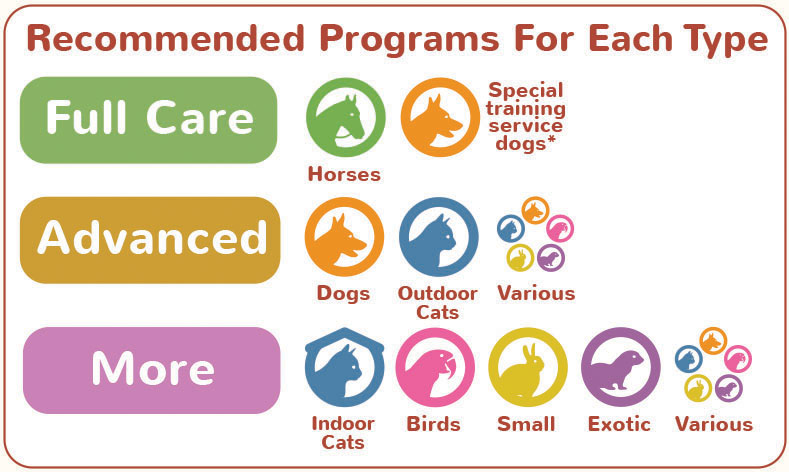
Front Pages Links
Types Solutions
Programs
Overview
Walk through screencast video
Sounds and videos
Try the 5 steps therapy sounds players
Sounds in programs (most types)
Sounds in Solutions for Horses
Sounds in Solutions for Outdoor Cats
Explore the 5 step video therapy
Further Information
Various information from around the web
Short comparison of WeStopFear and conventional process
What is noise phobia or fear of noises?
Conventional Noise Phobia Therapy
Comparing solutions in the market
A new standard practice for pets and horses?
The book
 The book "Pets and Horses Should Not Have To Live In Fear Of Noises", written by the innovator behind WeStopFear and the Simple Secure Steps, is available on Amazon.com as Print version or Kindle version.
The book "Pets and Horses Should Not Have To Live In Fear Of Noises", written by the innovator behind WeStopFear and the Simple Secure Steps, is available on Amazon.com as Print version or Kindle version.
Chapter: About animal types, fear of sounds, and noise phobia (page 23)
Chapter: Is this new method the best method available? (page 147)
The Story: Why and how WeStopFear was developed (page 160)
About the author and developer (page 189)
Merch and designs
The merch collections and DuFauna designs are designed by the innovator behind WeStopFear and the Simple Secure Steps.
Infographics designed by WeStopFear © Copyright.

